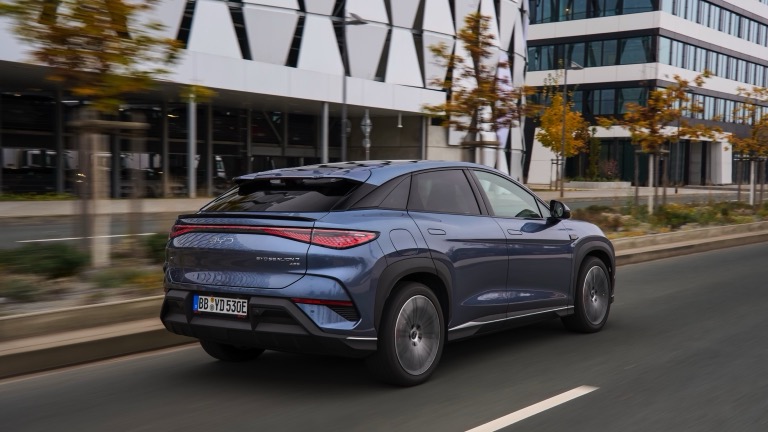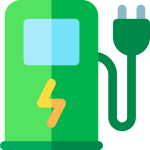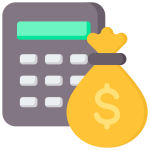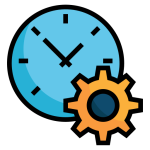
BYD’s Australian offensive continues apace. The arrival of the all‑electric Sealion 7 mid‑sized SUV is more than another model launch; it’s a strategic push into one of the country’s most contested segments. With the Tesla Model Y still the benchmark for many buyers, BYD has positioned the Sealion 7 as a value-rich, feature-dense alternative – one designed to convert traditional SUV buyers and cost‑conscious EV switchers alike.
Market context: why the Sealion 7 matters
Australia’s appetite for mid‑sized SUVs remains insatiable. Over recent years the Tesla Model Y captured a large share of local electric vehicle registrations, and other brands have scrambled to offer credible alternatives. BYD’s playbook is familiar: take hard value positioning, back it with competitive specifications and a packed equipment list, and support it with a rapidly expanding dealer and service footprint.
That strategy paid dividends with the BYD Seal sedan and Atto 3. The Sealion 7 builds on that momentum – leveraging BYD’s e‑Platform 3.0 and Blade Battery technology – and aims squarely at buyers who want space, technology and long range without a premium price tag.
What you need to know: trims, performance and range
BYD has launched the Sealion 7 in two principal variants tailored to different buyer priorities:
- Premium (single‑motor, rear‑wheel drive)
- Battery: 82.5 kWh Blade Battery
- Power/Torque: ~230 kW / 380 Nm
- 0-100 km/h: ~6.7 seconds
- WLTP range: up to ~482 km
- Charging: AC 11 kW, DC fast charging up to 150 kW
- Positioning: value and range for families and everyday use
- Performance (dual‑motor, all‑wheel drive)
- Battery: 82.5 kWh Blade Battery
- Power/Torque: ~390 kW / 690 Nm
- 0-100 km/h: ~4.5 seconds
- WLTP range: up to ~456 km
- Charging: AC 11 kW, DC fast charging up to 150 kW
- Positioning: buyers wanting strong straight‑line performance and extra traction
Both variants rely on BYD’s Blade Battery, noted for its thermal stability and safety attributes, and both use CCS2 for DC fast charging compatibility across Australia’s major public charging networks.
Interior and equipment: premium touches at a mainstream price
Where the Sealion 7 arguably changes the conversation is inside. The cabin moves BYD beyond bargain‑brand perceptions:
- Materials and fit: extensive soft‑touch surfaces, genuine leather upholstery on certain grades and stronger overall fit‑and‑finish than earlier models.
- Infotainment: a 15.6‑inch rotating touch screen (landscape/portrait capability) plus a 10.25‑inch digital instrument cluster. Wireless Apple CarPlay and wired Android Auto are supported.
- Comfort: heated and ventilated front seats, heated rear seats, large rear legroom thanks to a long wheelbase, a 500‑litre boot plus a usable front trunk (frunk) of around 58 litres.
- Audio and convenience: a 12‑speaker Dynaudio system on higher grades, ambient lighting, and practical touches such as Vehicle‑to‑Load (V2L) functionality – useful for camping and recreational use in Australia.
Driving dynamics and everyday usability
Independent reviews and owner reports in Australia point to a mixed but generally favourable driving experience. BYD’s inclusion of Frequency Selective Damping (FSD) shock absorbers is an attempt to deliver comfort across the nation’s varied surfaces – from urban streets to highway tar and regional lanes.
- Ride and handling: refinement has clearly improved over earlier BYD offerings. The Sealion 7 is composed at speed and quiet inside, thanks partly to improved insulation. That said, some drivers report a stiffer response over broken surfaces, and the Performance model’s larger wheels can transmit sharper impacts.
- Steering and driver feel: improvements are evident; steering is more natural than in previous BYD cars though enthusiasts will still describe the experience as composed rather than involving.
- Acceleration: the Performance grade’s 0-100 km/h in the mid‑4‑second range delivers genuine urgency – it’s quick enough to surprise family SUV buyers and to outpace many rivals in day‑to‑day driving.
Range, charging and real‑world energy use
BYD’s claimed WLTP figures are competitive, particularly for the Premium RWD model. In real‑world Australian conditions, however, energy consumption varies significantly with load, speed and terrain.
- City vs highway: urban consumption tends to be favourable; sustained high‑speed driving and hilly routes can raise energy use noticeably, especially in the heavier AWD variant.
- Charging: 150 kW DC fast‑charging capability is adequate for practical long‑distance use. Users typically see peak charge rates in the 100-145 kW range when the battery is at low state‑of‑charge, slowing past 50 per cent – consistent with many mainstream EVs. The Sealion 7 doesn’t match the fastest 800‑volt systems on the market, but it offers reliable, compatible charging across Australia’s CCS network.
- V2L: a valuable feature for the Australian market, allowing owners to power camping equipment, tools or small appliances at up to vehicle‑rated output.
Safety and driver assistance
BYD equips the Sealion 7 with an extensive ADAS suite. Early owner feedback flags that while features like lane keeping, adaptive cruise and automated emergency braking are present and effective, some systems can feel over‑zealous in their interventions. That has prompted some drivers to adjust or disengage specific functions. The Blade Battery contributes to the model’s safety narrative thanks to its patented cell architecture and thermal performance.
Who should consider the Sealion 7?
The Sealion 7 is targeted at buyers who prioritise interior quality, equipment levels and long range for family use while keeping an eye on value. It’s especially appealing to:
- Families seeking a spacious five‑seat SUV with practical cargo and user‑friendly tech.
- Buyers trading down from premium brands who still want a well appointed cabin and strong straight‑line performance.
- Regional and recreational buyers who will value V2L and a practical charging range.
Where BYD can still improve
Areas that remain under scrutiny include suspension tuning across all road types, minor refinement of ADAS calibrations for local conditions, and continued expansion of aftersales support and parts availability as volumes grow.
Conclusion
The BYD Sealion 7 represents a decisive step in BYD’s maturation as a global EV brand and a direct challenge to established competitors in Australia’s lucrative mid‑sized SUV segment. It does not offer radical driving dynamics, nor does it break charging speed records, but it delivers a compelling package: a high‑quality interior, robust range, strong performance in the Performance grade and sensible charging capability – all at a price that undercuts many rivals.
For Australian buyers who prioritise value, equipment, range and everyday comfort over niche performance attributes, the Sealion 7 is likely to be a strong contender. BYD’s continued focus on dealer and service capacity, along with incremental tuning adjustments for local roads, will determine how quickly the model converts interest into long‑term ownership confidence.
Frequently asked questions
What are the real driving ranges I can expect from the Sealion 7 in Australia?
Real‑world range depends on variant, driving style, speed, load and topology. Expect WLTP figures (around 482 km for the RWD Premium and about 456 km for the AWD Performance) to be achievable in mixed urban driving. Sustained highway speeds, hilly routes and heavy loads will reduce real‑world range, particularly for the AWD model.
How fast can the Sealion 7 charge, and is it compatible with Australia’s public chargers?
The Sealion 7 supports CCS2 DC fast charging up to about 150 kW and AC charging at 11 kW. On most public DC chargers you’ll see peak charge rates typically in the 100-145 kW window when the battery is at a low state of charge, tapering as SOC rises. It is compatible with Australia’s major networks using the CCS standard.
Is the Blade Battery safe and reliable?
BYD’s Blade Battery uses a prismatic cell design with lithium iron phosphate chemistry that emphasises thermal stability and safety. It has been central to BYD’s safety messaging globally. As with any battery technology, long‑term performance is influenced by usage patterns, charging habits and climate, but the Blade Battery has earned a strong safety reputation.
How does the Sealion 7 compare with the Tesla Model Y?
The Sealion 7 and Model Y pursue different value propositions. The Model Y emphasises software ecosystem, Supercharger access and a certain level of driving engagement; the Sealion 7 competes on equipment levels, interior quality and price. If you prioritise raw performance tech and a fast charging ecosystem, Tesla remains attractive. If you want high spec levels for a lower outlay and a very comfortable cabin, BYD’s package is compelling.
What are common owner complaints so far?
Early owner feedback in Australia highlights a few recurring themes: suspension tuning that can feel firm or unsettled over certain road imperfections, occasionally over‑assertive ADAS interventions, and some desire for more physical controls for climate functions. Many owners praise the interior quality, value and features despite these caveats.
About EV Evolution
EV Evolution is the leading online platform dedicated to Australian electric vehicle owners and enthusiasts. We foster a vibrant community, delivering essential EV news and insights, and enhancing user engagement through our innovative, AI-powered chatbot for dynamic discussions. Our mission is to empower Australian electric vehicle owners and enthusiasts by fostering a vibrant, AI-driven online community that connects, informs, and advances the nation’s electric vehicle landscape.




